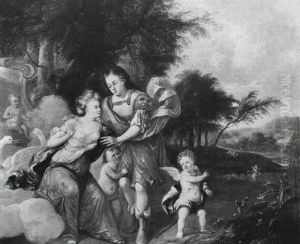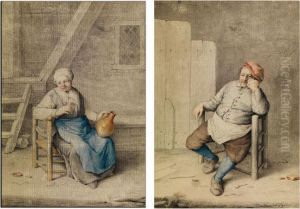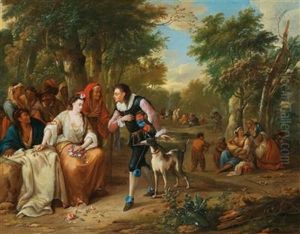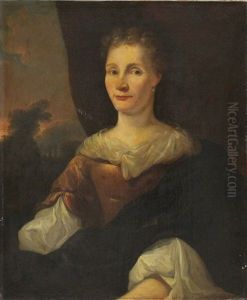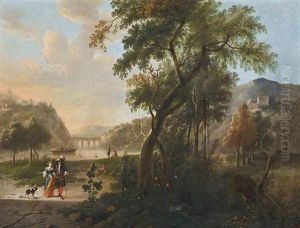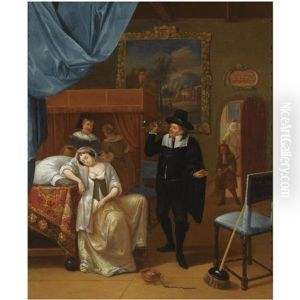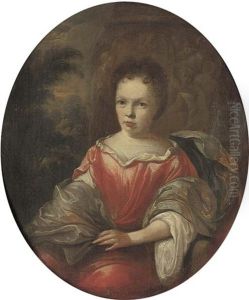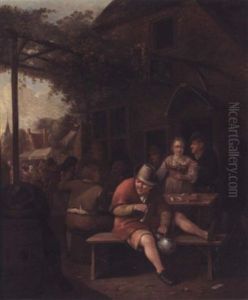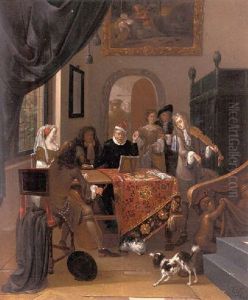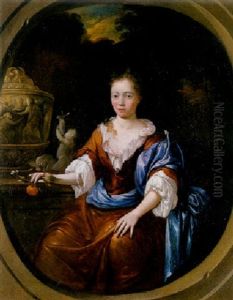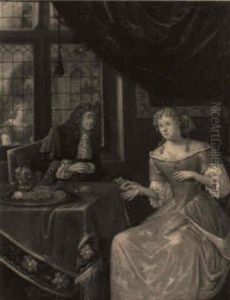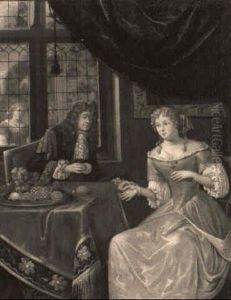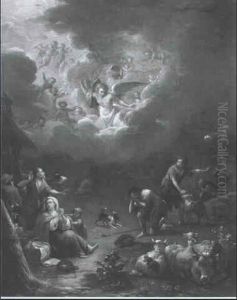Hendrik Carre Paintings
Hendrik Carré, also known as Hendrik Carré the Elder to distinguish him from his similarly named offspring, was a Dutch painter and draughtsman born in 1663 in Amsterdam, Netherlands. He was part of the prolific Carré family, which contributed significantly to the Dutch Golden Age of painting, a period marked by a remarkable output of high-quality artwork in the 17th century. Hendrik's contributions, though less documented than some of his contemporaries, hold a special place in the artistic landscape of his time for their distinct style and subject matter.
Carré's artistic journey is somewhat shadowed by the scarcity of detailed records, a common issue for many artists of his era. However, it is known that he specialized in landscapes, still lifes, and occasionally, genre scenes. His landscapes often depicted the Dutch countryside, characterized by meticulous attention to detail and a harmonious interplay of light and shadow, capturing the serene beauty of the Netherlands. These works not only showcased his technical skill but also his ability to evoke emotion and atmosphere, inviting viewers into the tranquil scenes he portrayed.
In addition to landscapes, Carré's still lifes are notable for their intricate compositions and vibrant depiction of textures. These pieces frequently featured an array of objects that reflected the Dutch fascination with global trade goods during the 17th century, including exotic fruits, luxurious textiles, and gleaming metalware. Through these works, Carré demonstrated a keen eye for detail and a masterful ability to render different materials, contributing to the era's exploration of still life as a significant genre.
Despite the apparent lack of extensive fame during his lifetime, Hendrik Carré's oeuvre has gained appreciation over the centuries. Art historians and collectors have come to value his work for its aesthetic qualities and its representation of Dutch Golden Age artistry. Carré died in 1721, leaving behind a legacy that, while not as well-documented as some of his contemporaries, continues to captivate and inspire interest in the richness of 17th-century Dutch painting.
Though specific exhibitions focusing solely on Carré's work are rare, his paintings can be found in various museums and private collections, where they are cherished for their historical value and artistic merit. His contribution to the Dutch Golden Age of painting, while subtle, remains an essential part of understanding the period's artistic achievements and the broader cultural context of 17th-century Netherlands.
